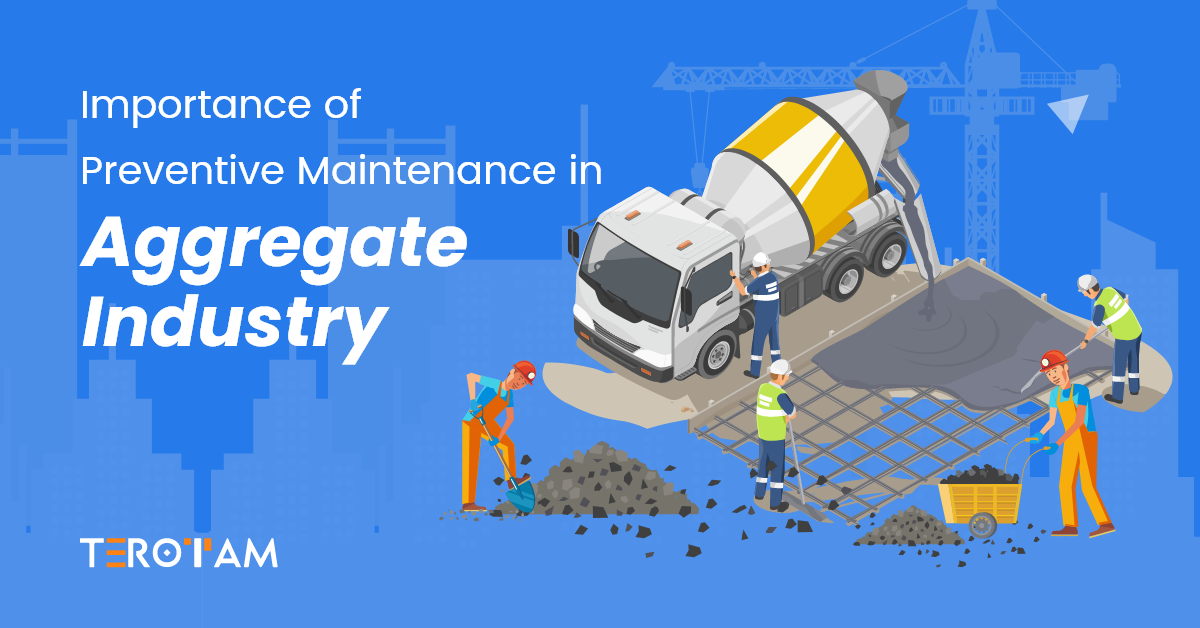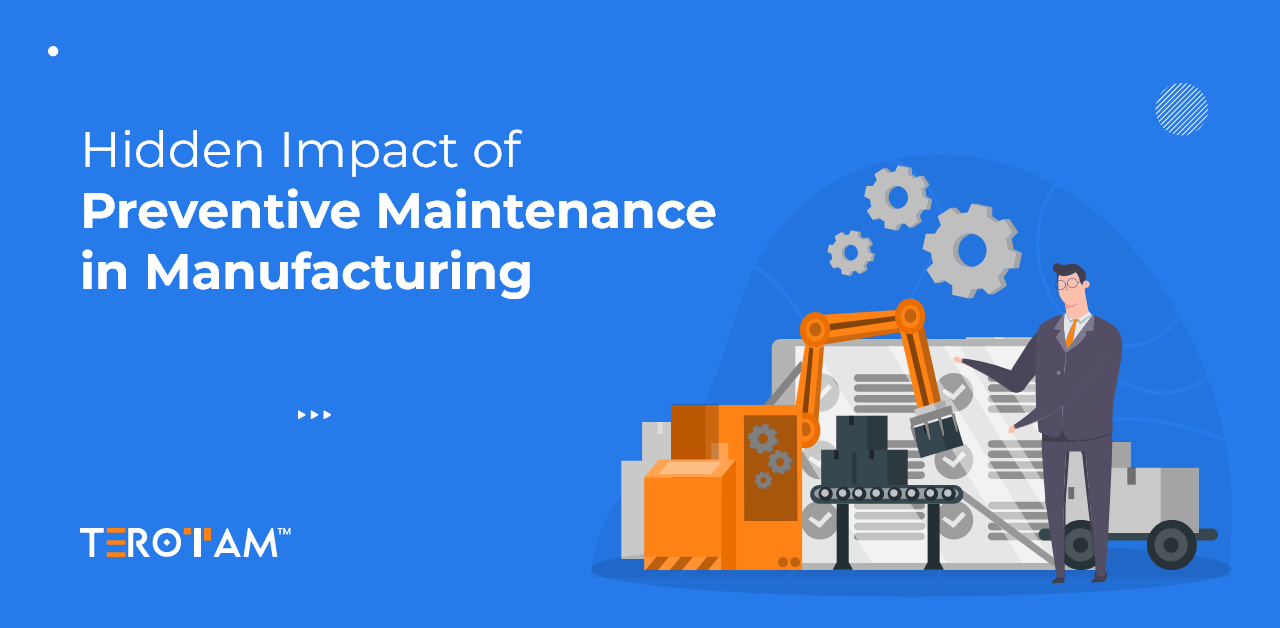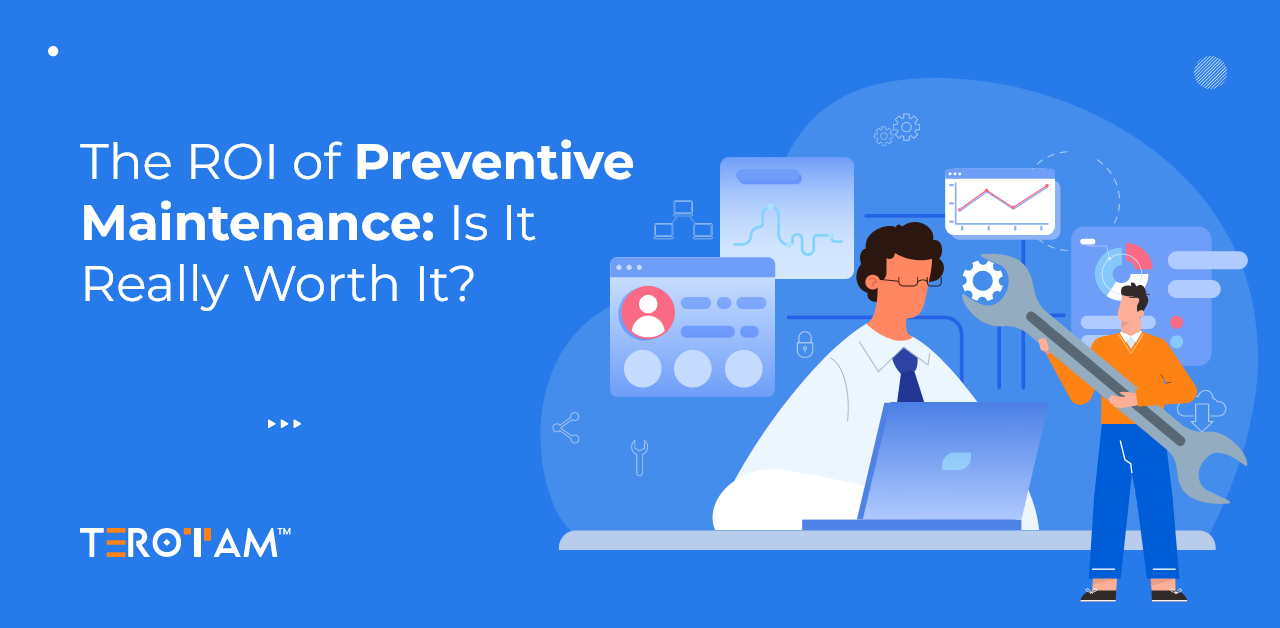In the pulse of infrastructure development and construction, the aggregate industry serves as the cornerstone, supplying the vital materials necessary for building roads, bridges, and structures that define modern civilization. From gravel and sand to crushed stone and concrete, aggregates form the very foundation of our built environment.
But, just like any other industry, it faces some big challenges, especially when it comes to managing its equipment and keeping everything running smoothly.
In this article, we’re going to talk about how preventive maintenance can help the aggregate industry deal with its problems and work better.
Current Scenario of Aggregate Industry
In 2024, the aggregate industry grapples with persistent challenges in asset and facility management, necessitating systematic maintenance solutions. Recent industry data reveals that downtime expenses remain a primary concern, averaging between $1,000 to $3,000 per minute of unplanned equipment downtime. As infrastructure demands surge, the average age of machinery surpasses 12 years across many facilities, intensifying maintenance complexities and operational risks.
Furthermore, regulatory compliance dictates maintenance priorities, with stringent environmental and safety standards mandating meticulous documentation and adherence to maintenance protocols.
Approximately 70% of aggregate producers prioritize implementing computerized maintenance management systems (CMMS) to bolster operational efficiency and asset reliability. The integration of CMMS software facilitates real-time equipment monitoring, predictive maintenance scheduling, and streamlined work order management, empowering organizations to optimize resource allocation and ensure regulatory compliance. With the adoption of systematic maintenance management solutions, aggregate companies can navigate operational hurdles, enhance asset performance, and fortify their competitive edge.
Major Challenges of Aggregate Industry
The aggregate industry encounters several significant challenges that impact operational efficiency and productivity. From equipment downtime to regulatory compliance, navigating these obstacles requires strategic planning and innovative solutions tailored to the unique demands of the sector.
Here are seven major challenges faced by the aggregate industry:
- Equipment Downtime: Unplanned breakdowns and downtime of critical machinery can disrupt production schedules, leading to significant losses in productivity and revenue.
- Aging Equipment: Many facilities in the aggregate industry operate with aging machinery, increasing the likelihood of breakdowns and the need for frequent maintenance and repairs.
- Predictive Maintenance Implementation: Implementing effective predictive maintenance programs requires significant investment in technology, training, and resources, which can be challenging for some aggregate operations.
- Inventory Management: Managing inventory of spare parts and supplies for maintenance can be complex, especially in large-scale operations with diverse equipment needs and decentralized procurement processes.
- Workforce Training and Skills: Ensuring maintenance personnel are adequately trained and skilled in modern maintenance techniques and technologies is crucial for effective asset management and optimization.
- Regulatory Compliance: Adhering to stringent regulatory requirements related to equipment maintenance, safety standards, and environmental regulations adds complexity to asset and facility management practices in the aggregate industry.
- Integration of Maintenance Software: Implementing and integrating maintenance management software systems into existing workflows and processes can be challenging, requiring careful planning, customization, and training to maximize effectiveness and efficiency.
Preventive Maintenance in Aggregate Industry
In the aggregate industry, preventive maintenance emerges as a pivotal strategy to mitigate operational disruptions, optimize equipment performance, and prolong asset lifespan. By adopting a proactive approach to maintenance, aggregate producers can systematically address potential issues before they escalate into costly breakdowns and downtime. Preventive maintenance entails scheduled inspections, routine servicing, and predictive analytics to promptly identify and address maintenance needs. This proactive approach minimizes the risk of unplanned downtime and enhances operational efficiency by optimizing equipment availability and reliability.
Preventive maintenance aligns with the industry’s focus on safety and regulatory compliance. With regular inspections and maintenance checks, aggregate facilities can ensure that equipment operates within specified safety parameters and meets regulatory requirements.
Preventive maintenance practices also contribute to a safer work environment by identifying and mitigating potential hazards before they pose a risk to personnel or operations.
Key Function of Preventive Maintenance for Aggregate Industry
Scheduled Maintenance Tasks:
Establishing regular schedules for maintenance tasks such as lubrication, inspection, and calibration ensures that equipment remains in optimal condition. Planned maintenance activities prevent the accumulation of wear and tear on machinery, reducing the risk of unexpected breakdowns and downtime.
Condition-Based Maintenance:
Implementing condition-based maintenance strategies involves monitoring equipment performance and health indicators in real-time. Maintenance teams can proactively identify potential issues and intervene before they escalate by tracking variables such as temperature, vibration, and fluid levels.
Predictive Analytics:
Leveraging data analytics and predictive modeling techniques enables the early detection of equipment failures based on historical performance data. Predictive analytics algorithms forecast equipment degradation and recommend maintenance actions, allowing for timely interventions and minimizing operational disruptions.
Inventory Management and Parts Availability:
Maintaining an organized inventory of spare parts and components ensures that critical items are readily available when needed. Preventive maintenance programs include inventory management protocols to track stock levels, reorder supplies, and streamline procurement processes.
Documentation and Reporting:
Comprehensive documentation of maintenance activities, including inspection reports, work orders, and equipment histories, facilitates compliance with regulatory standards. Detailed maintenance records provide valuable insights into equipment performance trends, facilitating data-driven decision-making and continuous improvement initiatives.
Workforce Training and Skills Development:
Providing training and development opportunities for maintenance personnel enhances their proficiency in executing preventive maintenance tasks. Training programs cover equipment-specific maintenance procedures, safety protocols, and troubleshooting techniques, empowering maintenance teams to manage assets effectively.
Integration with Maintenance Management Systems:
Integrating preventive maintenance programs with computerized maintenance management systems (CMMS) streamlines workflow processes and enhances visibility into maintenance activities. CMMS platforms automate scheduling, work order generation, and asset tracking, improving overall operational efficiency and resource allocation.
How does preventive maintenance Solve the challenges of the aggregate industry?
Preventive maintenance serves as a robust solution to address the multifaceted challenges encountered in the aggregate industry, offering a proactive approach to optimize asset management and operational efficiency:
Minimizing Downtime:
- Scheduled inspections and maintenance activities help identify and address potential equipment issues before they lead to unplanned downtime.
- Regular servicing of machinery reduces the likelihood of sudden breakdowns, ensuring continuous production and workflow efficiency.
- Predictive analytics enable early detection of equipment anomalies, allowing for timely intervention and maintenance to prevent catastrophic failures.
Extending Asset Lifespan:
- Routine maintenance tasks such as lubrication, cleaning, and calibration prevent premature wear and tear, thereby maximizing asset longevity.
- Proactively replacing worn-out parts and components mitigates the risk of major equipment failures and costly repairs, ultimately optimizing return on investment.
Enhancing Safety and Compliance:
- Systematic maintenance protocols ensure that equipment operates within specified safety parameters, minimizing the risk of accidents and injuries in the workplace.
- Adherence to preventive maintenance schedules facilitates compliance with regulatory standards and industry best practices, mitigating legal and financial risks associated with non-compliance.
- Maintenance activities and safety inspection documentation provide a comprehensive audit trail, demonstrating organizational commitment to safety and regulatory compliance.
Optimizing Resource Allocation:
- Predictable maintenance schedules enable effective resource planning and allocation, optimizing the utilization of manpower, materials, and equipment.
- Aggregation companies can proactively address maintenance needs and minimize emergency repairs and associated costs, leading to more efficient budget management.
- Data-driven insights from preventive maintenance activities facilitate informed decision-making regarding equipment upgrades, replacements, and capital investments.
Improving Operational Efficiency:
- Preventive maintenance fosters a culture of continuous improvement by identifying opportunities to enhance equipment performance and operational processes.
- Regular equipment inspections and condition monitoring enable early detection of inefficiencies and performance bottlenecks, allowing for timely corrective actions.
Other Key Features of CMMS for Aggregate Industry:
- Asset Tracking: Comprehensive CMMS solutions facilitate the tracking of equipment inventory, maintenance history, and performance metrics, enabling informed decision-making and resource allocation.
- Work Order Management: Streamlined work order management processes streamline maintenance tasks, from scheduling and assignment to completion and documentation.
- Predictive Analytics: Leveraging predictive analytics tools enables proactive maintenance strategies, identifying potential issues before they escalate into critical failures.
- Mobile Accessibility: Mobile-enabled CMMS platforms empower field technicians to access real-time data, submit work orders, and collaborate remotely, enhancing operational agility and responsiveness.
Conclusion
Preventive maintenance stands as a transformative solution for streamlining the aggregate industry’s asset and facility management practices. Implementing preventive maintenance strategies and CMMS technologies allows organizations to mitigate operational challenges, optimize resource utilization, and elevate overall efficiency.
Looking to know more? – Let’s talk now or write us at contact@terotam.com








